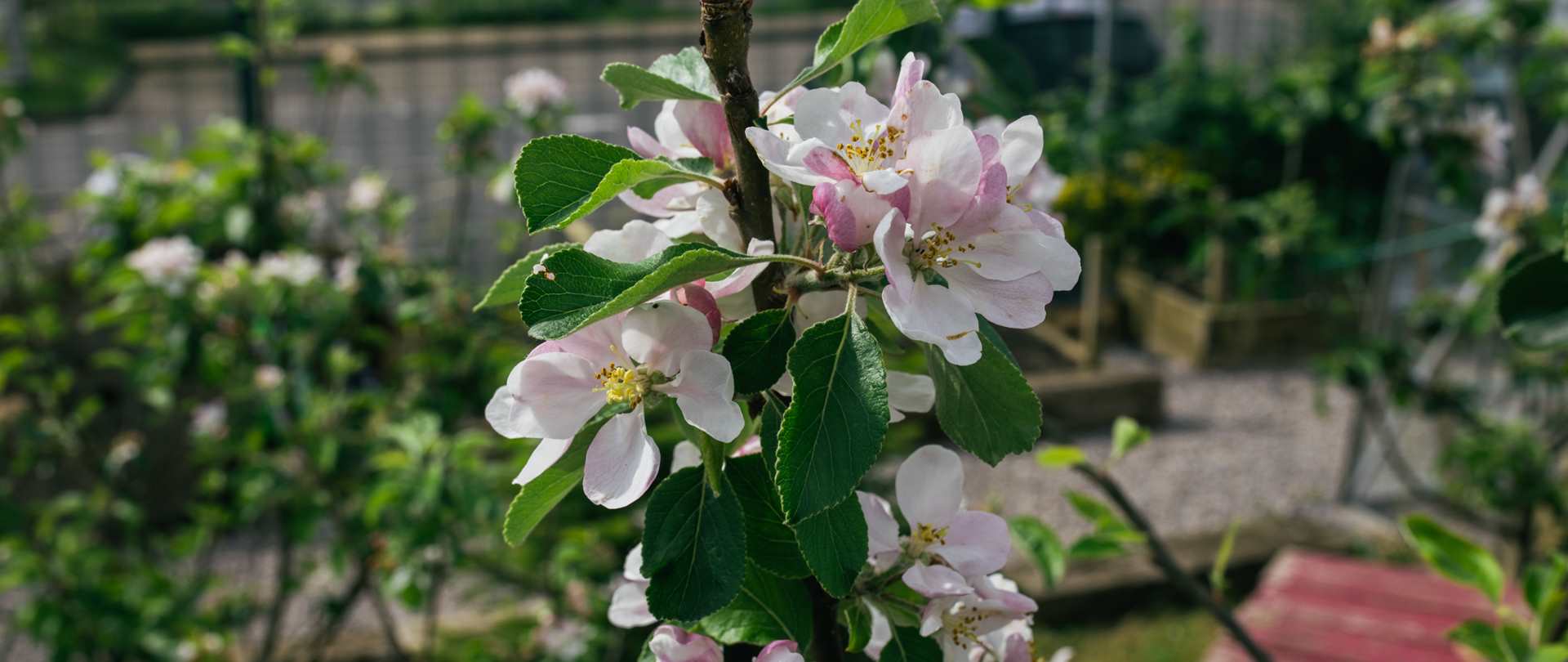Community Orchards Provide Refuge for Precious Pollinators – Celebrating World Bee Day
As part of Plant and Share Month, the Soil Association has joined forces with The Orchard Project to highlight the vital role pollinators play in our food systems. And not just bees, but other lesser known and perhaps a little less loved pollinator species such as moths, wasps, ants, butterflies and beetles.
As Plant and Share Month Draws to a close on World Bee Day this blog looks at how we can all help nature and focuses on The Orchard Project and how orchards can be a haven for pollinators.
The Orchard Project has established three pilot food forests in locations across the UK, as well as over 600 community orchards. Orchards are a fantastic habitat for pollinators, not just for the trees, but as a ‘mosaic’ habitat of grasslands, woodland, pasture and hedges. These habitats are fantastic on their own, but in an orchard they work together to create a wildlife haven that’s far more than the sum of its parts.
Vital to the food we eat
Pollinators are vital in the production of 75% of our crops and one third of the food we eat; there would be no tomato sauce for pasta or the pasta itself, no jam for our toast and no apples without them. Which is why pollinators are an integral part of Plant and Share Month activities and resources.
Plant and Share Month comes to an end this Saturday, which is World Bee Day, with over 1300 events happening across the UK we know that all the groups registered will have played a part in supporting bees and other pollinators this year. The theme of the 2023 World Bee Day is Bee engaged: Build Back Better for Bees – and what better way to do that than getting out growing for nature?
Schools, community groups and individuals can download six free bee and pollinator resources:
- Precious Pollinators
- Buzzing about Bees
- Growing Bee Friendly Herbs
- Bee Identification
- Bee Kind
- Build a bug hotel
Growing for Nature
As part of Growing for Nature, The Orchard Project has shared an impressive statistic with us: a recent study in Worcestershire found that traditional orchards host 2,686 different species, including many vital pollinators. Orchards are also specialist saproxylic habitats, supporting insects which feed on decaying wood. This fantastic, rare habitat is not found anywhere else other than in standing, living trees.
Anna Wade, Communications and Marketing Manager at Food for Life Get Togethers says:
“We are thrilled that the Orchard Project are involved with Plant and Share month. It is staggering to think that as many as 24% of Europe’s bumblebee species are now threatened with extinction, and we need to do all we can to help the ones we have left.
“Plant and Share Month has been a way for us all to make a positive impact, no matter how small, from leaving the grass grow, providing access to water in our gardens for wildlife or making bug hotels, there are dozens of ways we can all help pollinators for little or no cost and invest in our own wellbeing at the same time.”
Kath Rosen, CEO of The Orchard Project says:
“Our work centres around bringing communities together to plant orchards and nurture those spaces in the years to come, which includes sharing in the bountiful fruit harvests.
“A thriving orchard benefits the communities it supports, and this definitely extends to the wildlife within it. Planting with biodiversity in mind is increasingly an important part of our planning process, from planting wildflower areas, to including ponds and log piles. Without pollinators we’d have no fruit after all, so they have a vital role to play in the orchard ecosystem.”
Anyone can take part in Plant and Share Month, by starting an event either with friends, family or within their local community and registering it on our website for free, or by joining an existing event in their local area. Reach out to local community groups to see if there’s an event happening nearby, or to help arrange one with them – sign up new events here. It is not too late to register!
The Plant and Share resources are packed with ideas on how to help pollinators, no matter what your space – from a window sill to an allotment everyone can help.

